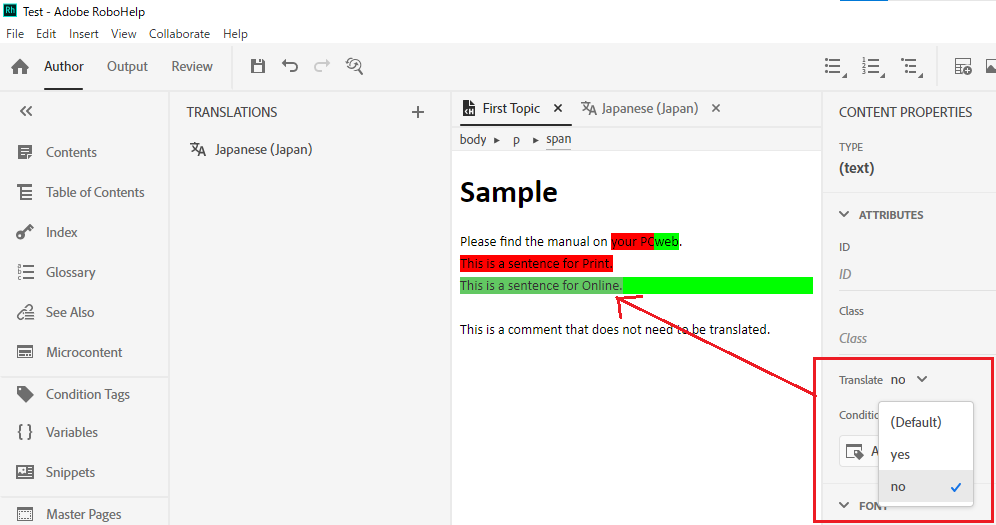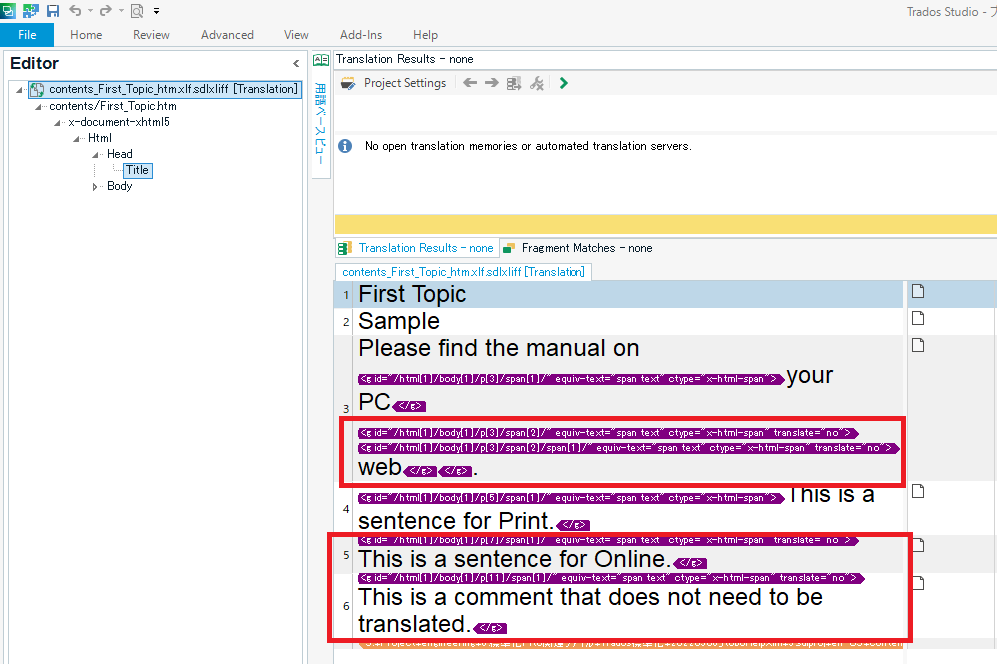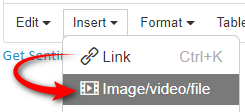Hi, I'd like to ask a question about XLIFF files that Adobe RoboHelp creates.
Adobe RoboHelp now has features
1) to apply the translate="no" attribute to non-translatable HTML contents

2) to export HTML files to XLIFF files for translation.

The problem is that RoboHelp usually inserts the translate="no" attribute to tags other than trans-unit tags in XLIFF as shown in the image below

so even though Trados has a feature either to skip contents with the translate="no" attribute or to lock them as shown in the image below,

Trados seems to ignore all the translate="no" attributes RoboHelp inserts as long as they are inserted elsewhere other than to trans-unit tags. As a result, the contents with this attribute will be inevitably included for translation in Trados.

I have talked to a Japanese Adobe customer support personnel and I have come to a conclusion that at least for now, we have no control over where the translate="no" attribute ends up in a RoboHelp XLIFF so it's no surprise that Trados cannot properly process RoboHelp XLIFF files with "translate='no'" attributes. Please let me know if my understanding is correct and you have any suggestions or thoughts on this issue. I would appreciate your reply.
Thank you.
Generated Image Alt-Text
[edited by: Trados AI at 6:39 AM (GMT 0) on 29 Feb 2024]


 Translate
Translate



